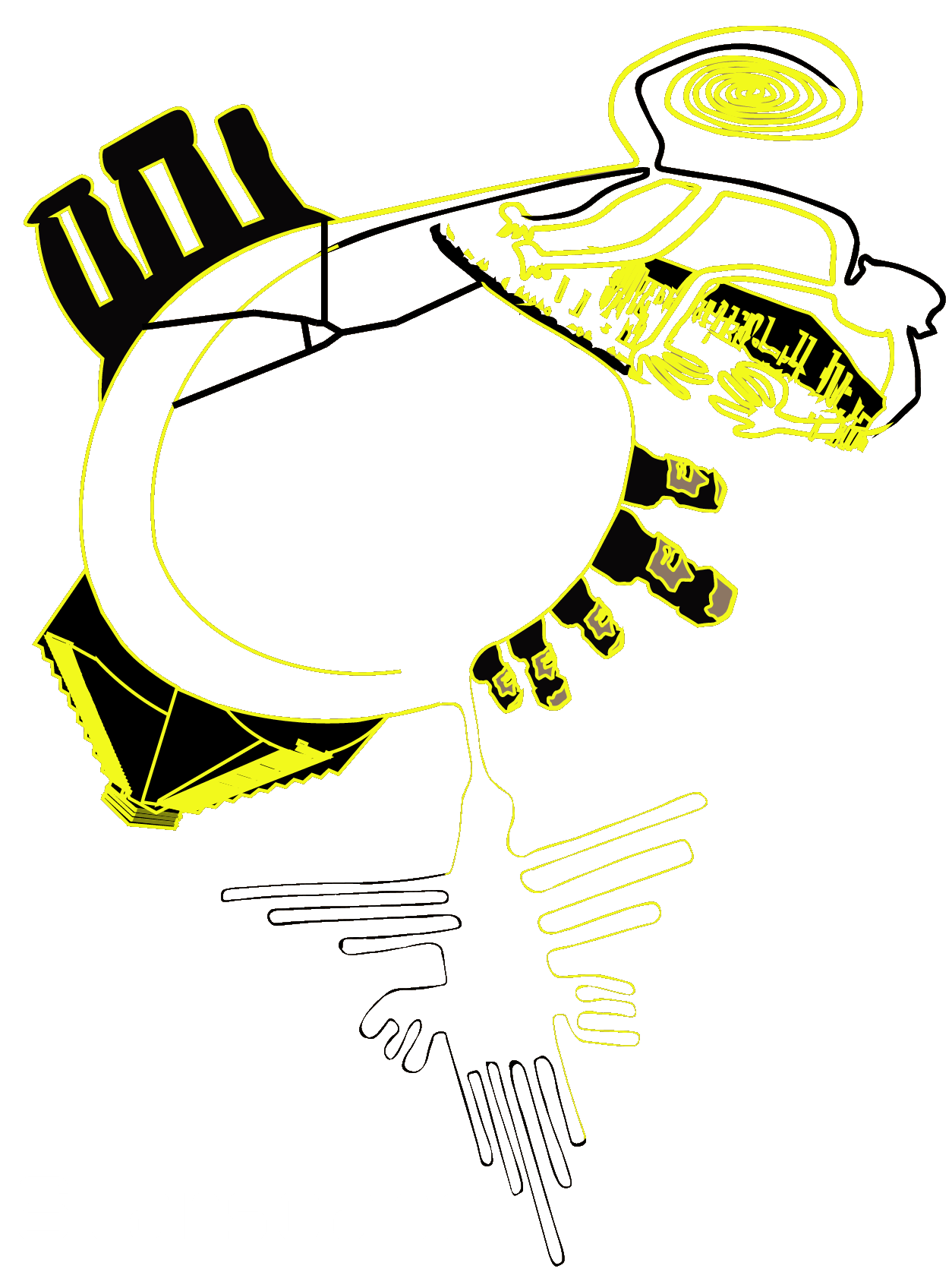I have started planning a visit during summer immediately after our return from the Spring Equinox in Malta. This was to satisfy my thirst for alignments and to witness two in one shot. While I was aware of the Mnajdra calendar I only heard about the one at Hagar Qim during the tour guide last March. The alignment is similar to what the inhabitants thousands of km away in Neolithic Banat (Romania) would have experienced at equinoxes. The illumination of a special altar by the rising/setting Sun through a circular window carved in stone (at Parta Romania it was carved in the Western wall).
This time I was going alone as Simina had to stay behind with our 2 lovely cats. I bought the Solstice tickets ASAP on 6th April for Hagar Qim on 20th June and Mnajdra on 21st June. I did the same with the guesthouse in Malta via Booking.com. I decided to get a place in Qrendi within walking distance from the temples as last time the Uber was too pricy and there is no public transport at 5 am.
As always here is the cost breakdown for my trip from Nottingham UK to Malta.
Price for 1 PAX 4 nights (1 in Luton and 3 in Malta): super off-peak train ticket from Nottingham to Luton (£31), return bus ticket from Luton to Nottingham (£25), plane tickets with Ryanair and my backpack (£179), hotels (£293), tickets to solstice events (£52): £580.
Compared to our 2 PAX shorter trip in March of £440 this was a bit more expensive probably due to being summer and also a day longer. Extra costs were minimal and only included buying some food and water from the nearby Lidl (about £20), some water and snacks from the airport and plane, and a ticket to the Ghar Dalam cave and nearby Borg In-Nadur Temple (£6). Bus tickets were not needed as I still had my Malta travel card for 12 trips (I still have 2 left after my return) valid for 12 months after first use.
Back in Malta
I was already familiar with bus routes and where to get food so it all went smoothly upon my arrival. After a quick snack at the airport McDonald’s I headed for Qrendi with a stopover at a Lidl supermarket to get some food and water for my staying. Everything took about an hour and around 4 pm I was in the apartment relaxing and planning a bit of exploration. I wanted to see how long it will take me to get on foot to Mnajdra and also considered visiting the Blue Cave.
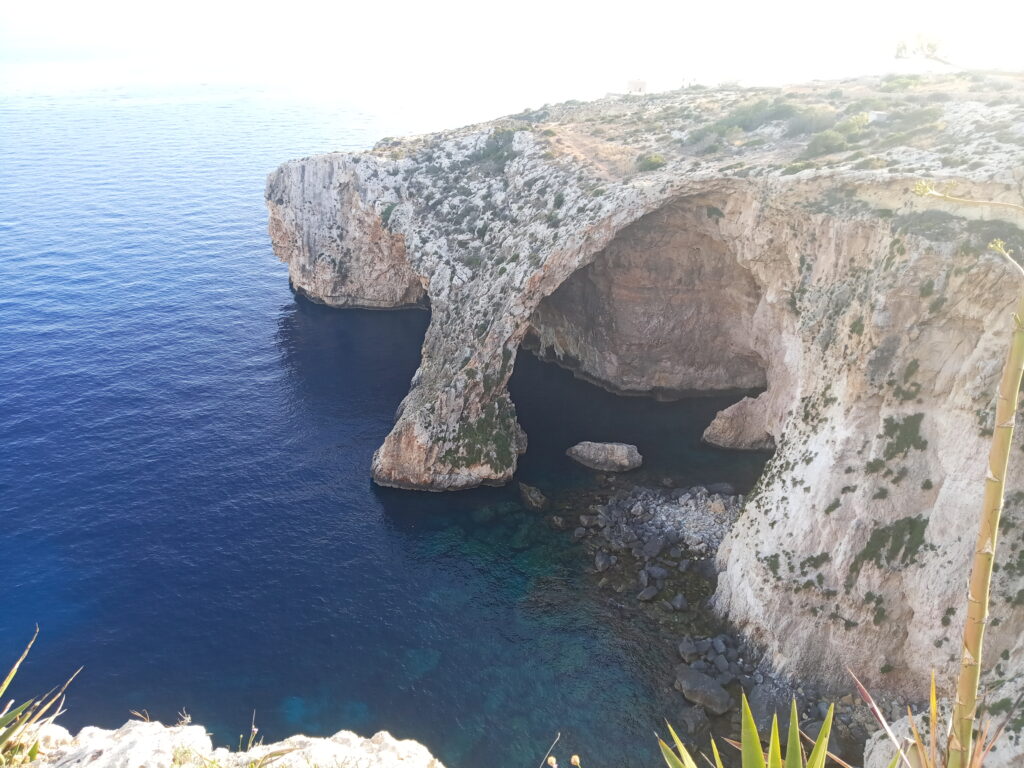
The next day I would witness the first of the two alignments I booked a slot for. For each one the visit starts at 5:30 and there is a limited number of tickets: 10 for Hagar Qim (due to the size of the observation area) and around 30 for Mnajdra. There are no drums (although someone did bring one for Mnajdra the museum staff told her not to play before the end of the event) or music (like in Karnak Egypt) just a small group and our guide.
Hagar Qim solstitial alignment
Our group guide was a young lady that carefully explained the history of the place and made some connections with the stars and calendars. She guided the group I joined for Mnajdra the next day as well.
Contrary to other cases in Malta and around the world, the alignment at Hagar Qim does not take place along the main axis of the temple but is rather through a side circular window illuminating a stone slab part of a circular arrangement.

Around 6 am the light starts to form a crescent shape on the stone slab. As it evolves the crescent becomes almost a full circle moving down towards the floor and creating an elongating cone that eventually disappears.
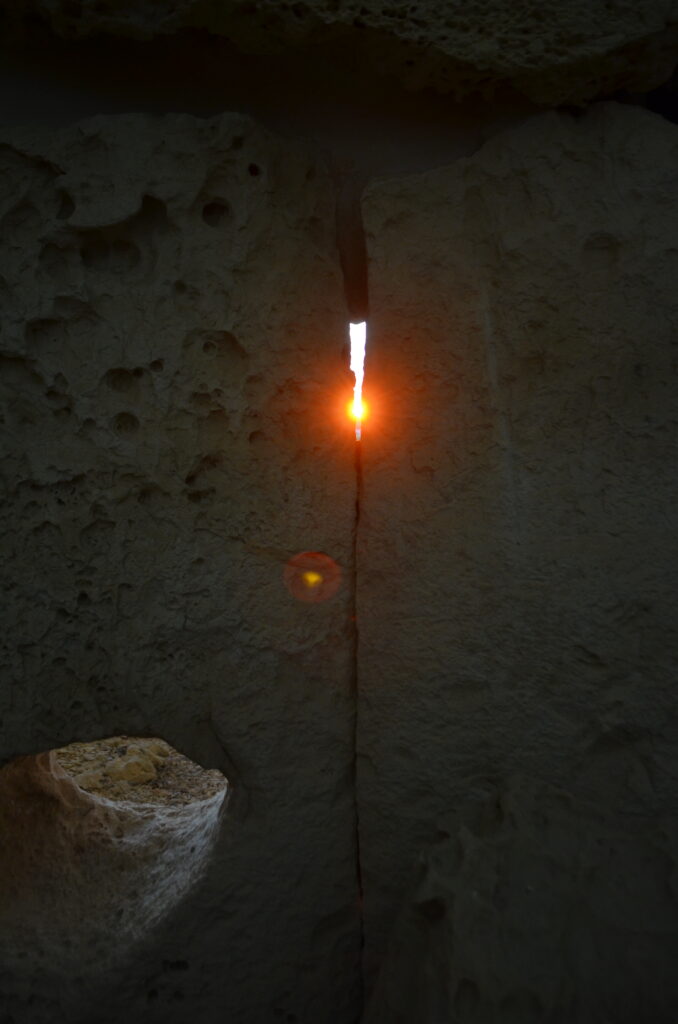



The entire illumination takes over half an hour far longer than the one at Mnajdra.
Mnajdra solstitial alignment
As the Hagar Qim illumination unfolds, the participants in the lower Mnajdra Temple still await for the Sun to perform its sun dance on the Temple calendar. I call it a calendar as the inside of the Temple is illuminated throughout the year in various areas with the light reaching the extremes at solstices and illuminating the center during equinoxes. While this is impressive enough, research has shown that the temple might have in fact been aligned with the Pleiades too. The illumination starts around 6:20 am and continues for about 15 minutes. A completely different experience stimulated by the T-shaped light beam and larger space.
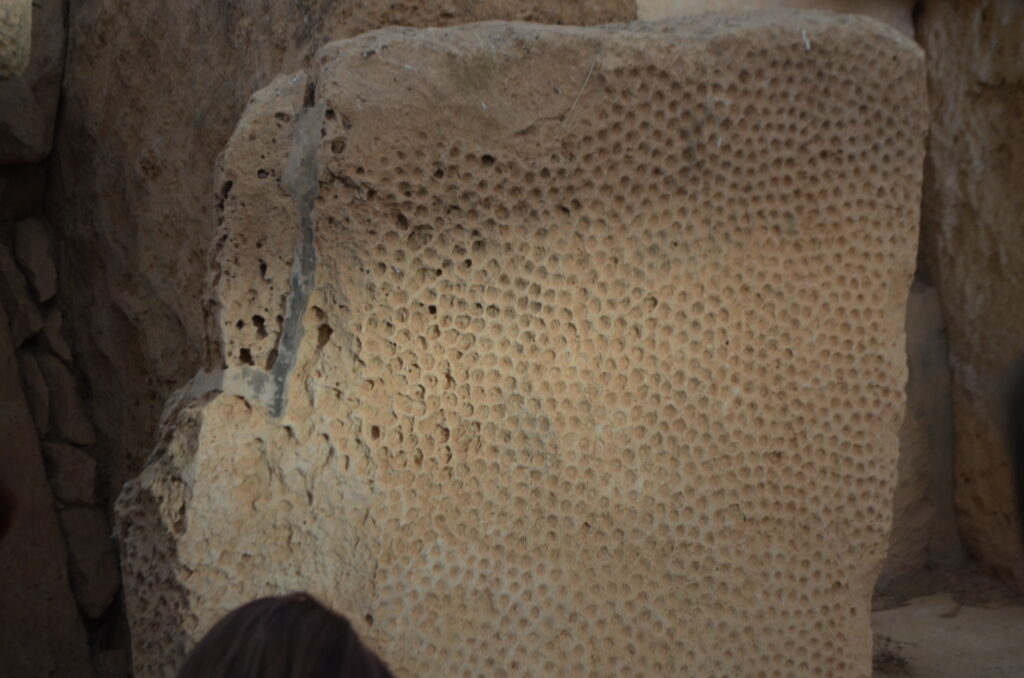

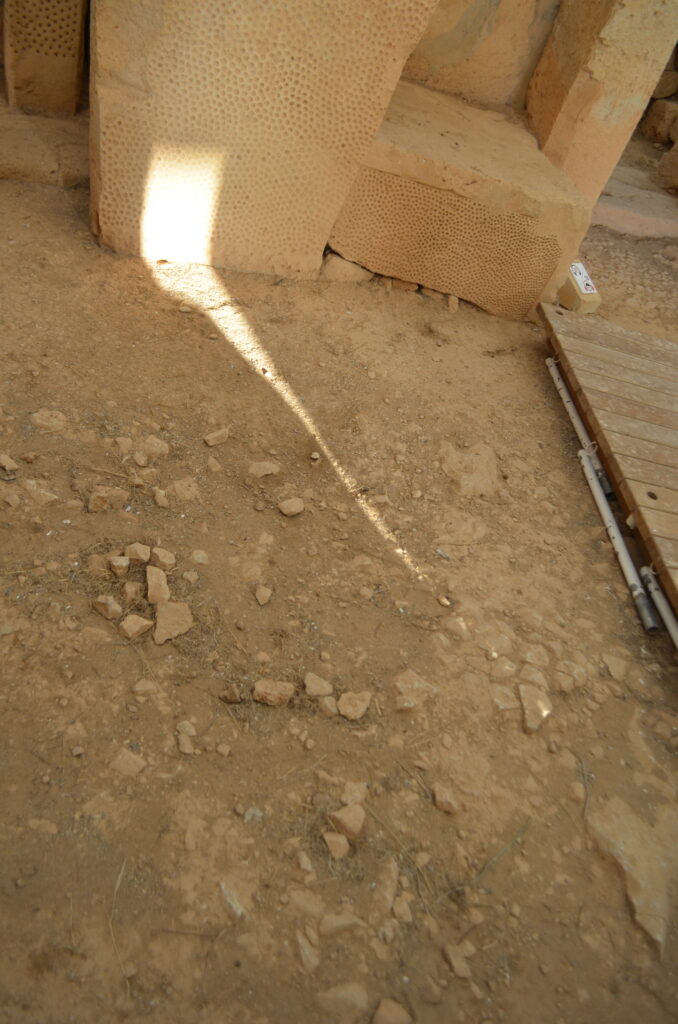
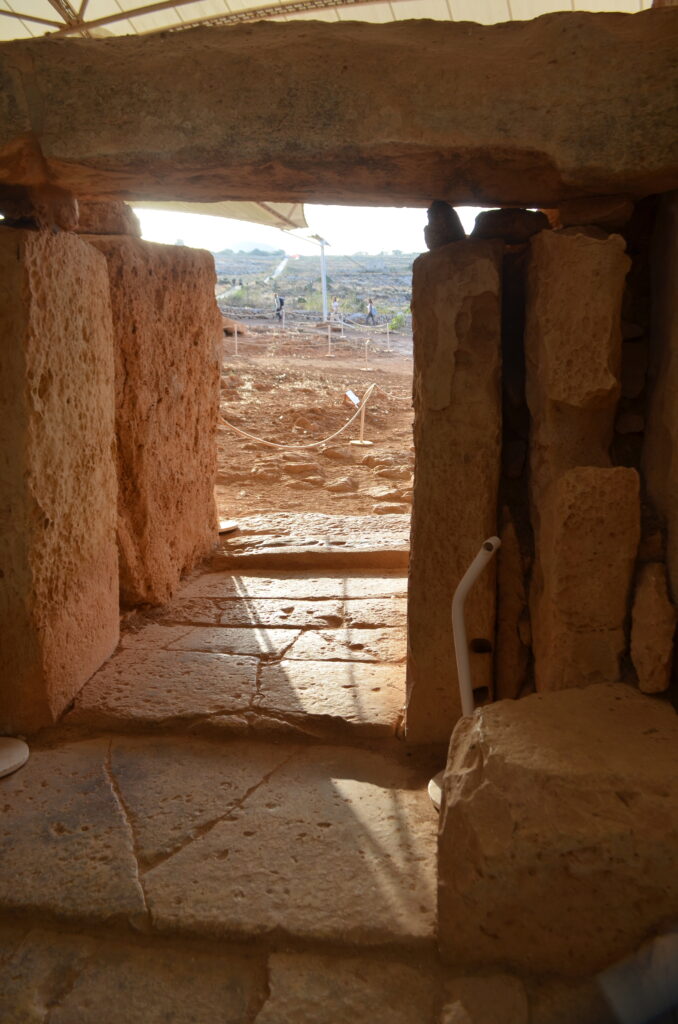
Each experience is unique, someone I had talked to told me that he preferred the Mnajdra alignment due to its complexity. I enjoyed both, perhaps Hagar Qim better. As I look back I wonder which one was built first and did they work together or independently? Both temple complexes are listed as belonging to the Ggantija phase (3600-3200 BCE) but they obviously had different astronomical designs in mind. Furthermore, the Mnajdra south temple (the one pictured in this post) was probably built later (3000-2500 BCE).
Which one did you like? Leave a comment below and join us next time we are there.
Morning alignments but what about the rest of the day?
Each solstice event ended around 8 am with a coffee and snack and a 4D movie on Hagar Qim (why isn’t there one on Mnajdra?). So the rest of the day was free.
On 20th June I used this time to visit some sites in the East of the island, Ghar Dalam Cave and the Borg In-Nadur small temple. By public bus, these are easily reachable from Qrendi and it takes no more than 3 hours to see them all (including round trip). Since all buses going there go through Valletta I took a snack at one of the street food cars right by the main bus station.
Right by the seaside there is a submerged Roman bath and some prehistoric grain silos and the famous cart ruts featured in the Ancient Apocalypse docuseries but with a more plausible explanation offered on the sign next to the place. These cart ruts are also present on other sites on the island as well as at Ghar Dalam Cave.

On the 21st of June, I used the morning to explore the Misqa water tanks near Mnajdra. Unfortunately, I didn’t know that you can get to them from Mnajdra on trail B4. and instead I went around following the main road on a 30-min hike. Nobody knows when they were built but people still use them. Their design is similar to those found in Armenia in Agarak, Aragatsotn region which I visited twice on my visits and tours. Nonetheless, those in Agarak are far more complex and numerous. It makes sense for people living in areas with a dry season to carve these complex tanks and channels that drive the rainwater in them.
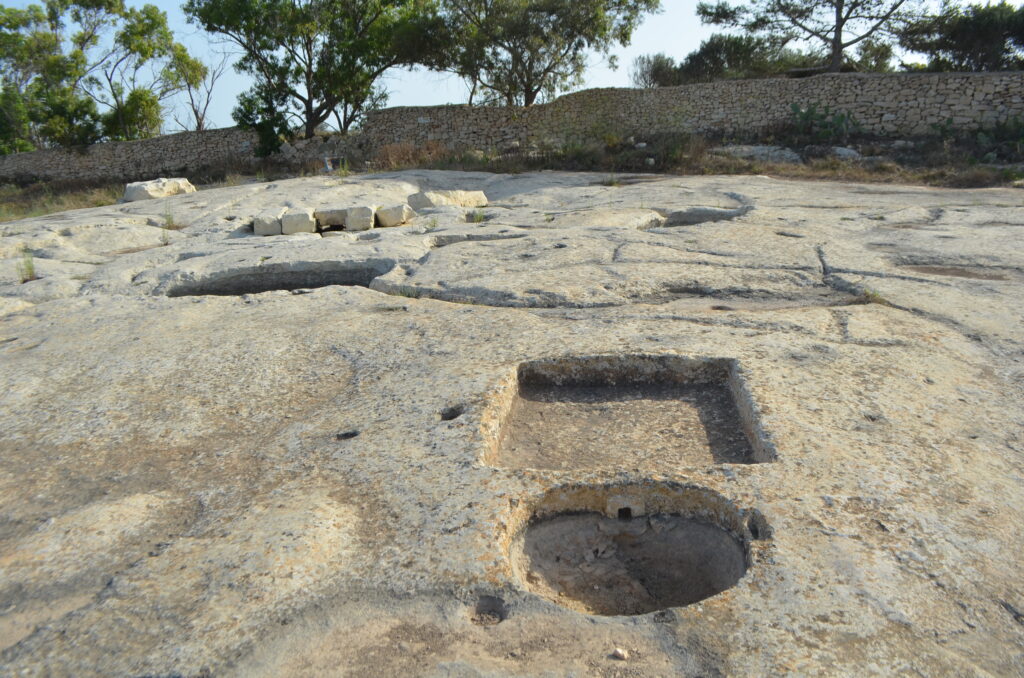
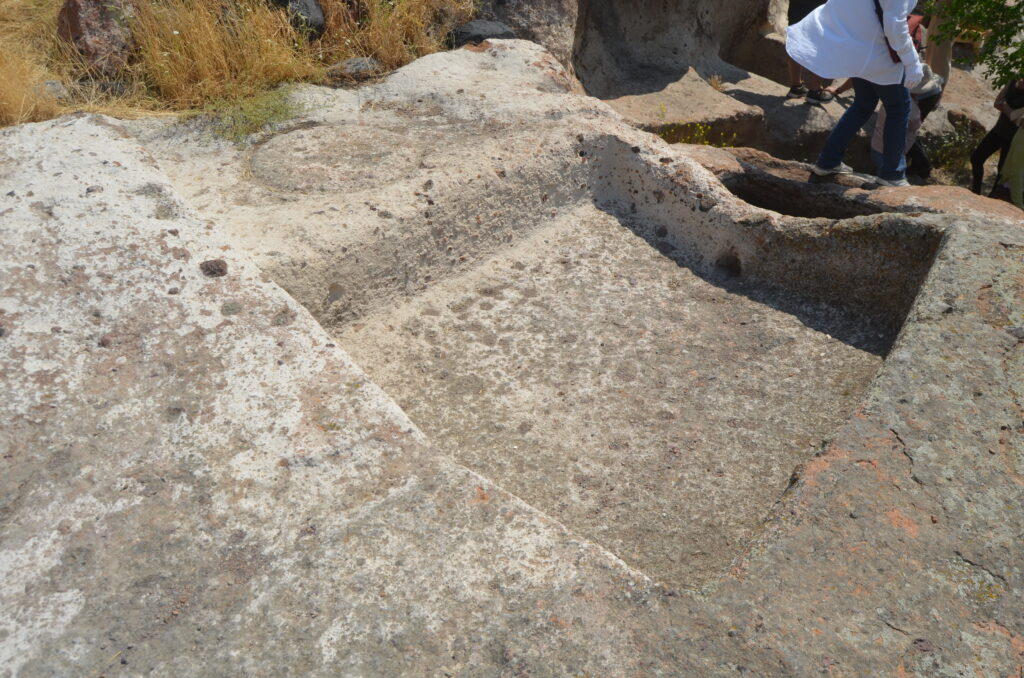
That’s all folks for this trip!
If you enjoyed this post consider following us on Facebook, Youtube, and Twitter or donating on Patreon. Also, stay tuned for public events Marc hosts regularly on Eventbrite.
